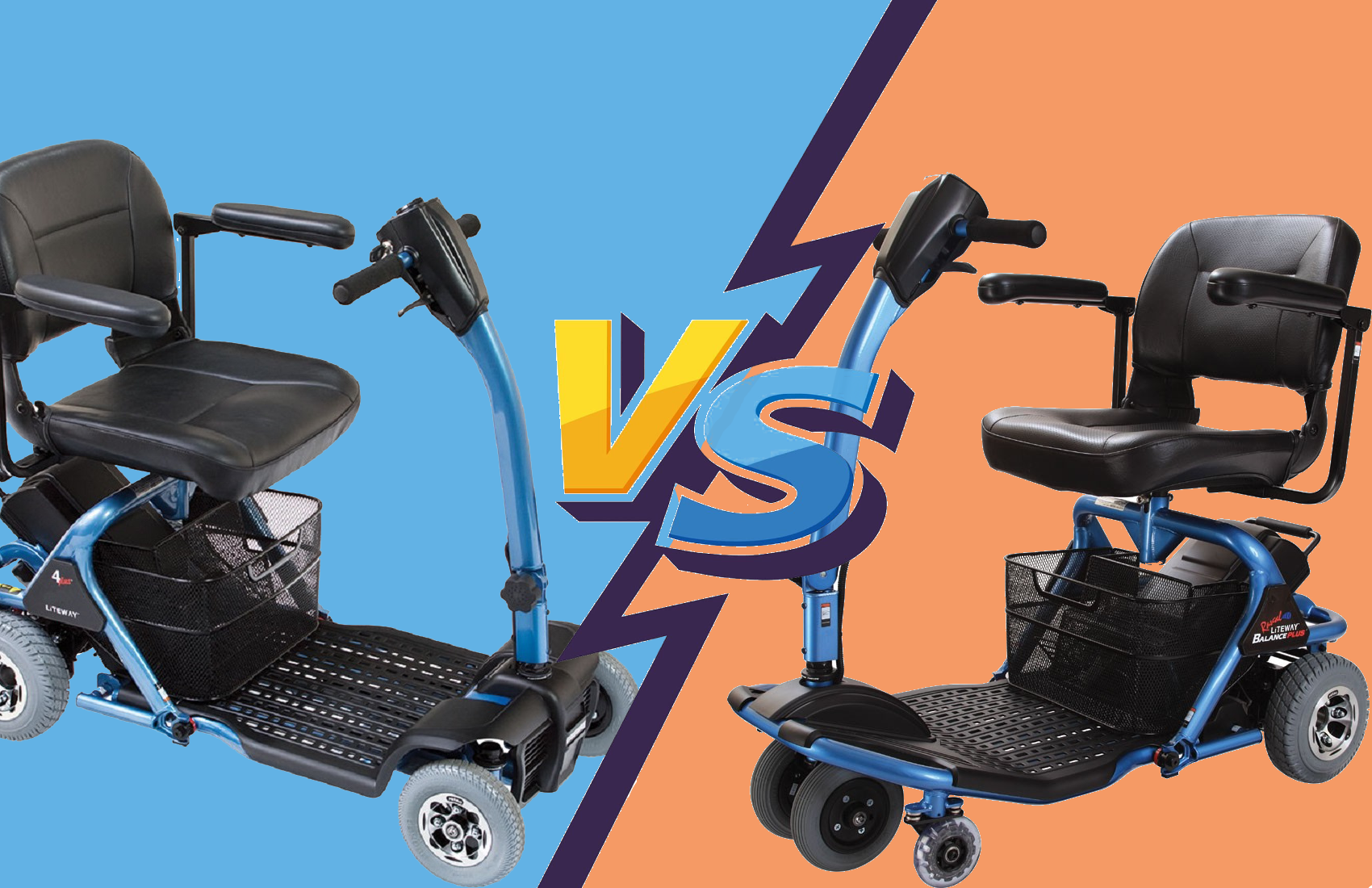
Written for Advice, October 27th, 2021.
click here to read similar articles:

Exploring the World with Mobility Scooters for Kids
Introduction: Did you know that mobility scooters aren’t just for grown-ups? Fair dinkum! Our little legends can also have a bonzer time cruising around in their very own mobility scooters. These beauties are designed with kids in mind, giving them the freedom to explore, have a ripper time, and become true blue Aussie adventurers. In …
Continue reading “Exploring the World with Mobility Scooters for Kids”
Price is what you pay, value is what you get, which is necessarily not the same
There are three weight types of Mobility Scooters, with different variants for each. The main variants usually consist of stationary, foldable, and pull-apart, but there is another type the user must consider and that’s the number of wheels the mobility scooter has. It is a tremendous decision with a lot of repercussions when made. this is a matter that is subject to frequent debate on which model type the user should choose, a 3-wheeled or a 4-wheeled mobility scooter. Mobility Scooters are adaptive mobility aid equipment, when you buy one of the two model types, you have considered what you are planning to use it for. So the user must choose wisely when deciding to buy a mobility scooter.
There are pros and cons of each configuration and might shed some light on your decision on which you should consider when buying.
The 3-Wheeled Mobility Scooter
The three-wheeler mobility scooter is configured to play the strength of maneuverability and traffic indoors. Because they feature a much tighter turning radius, they are incredibly efficient when transversing through large gatherings of people. Which would make them ideal for small spaces- especially public transportation, homes, and apartments. They can maneuver around obstacles a lot more easily physically and are often a lot more light when considering its counterpart. They are usually cheaper as well.
 Another great advantage is the comfort the three-wheeler mobility scooter can provide, which is an extra amount of legroom in the front due to the absence of two front wheels obstructing the space. This is good, especially for taller individuals, or suffering from leg or knee injuries and are wearing a cast.
Another great advantage is the comfort the three-wheeler mobility scooter can provide, which is an extra amount of legroom in the front due to the absence of two front wheels obstructing the space. This is good, especially for taller individuals, or suffering from leg or knee injuries and are wearing a cast.
Nevertheless, these added perks come at a cost, which is stability. While they still include anti-tip wheels for safety, a three-wheeled scooter is not as stable as a four-wheeled mobility scooter. Keep in mind that indoor activities are much more suitable when you consider buying a three-wheeled mobility scooter. Rougher, and outdoor terrain, will be a lot more difficult on a three-wheeler when considering logistics and maneuverability against gravel and grass.
For many people, this uncertainty around stability can be a big deal-breaker, and certainly, there are applications where three wheels are not suitable, especially outside. For this reason, they can be less popular, which Scooterland primarily stocks four-wheel units in our showroom at Ashmore, in the Gold Coast. However, that being said, there are some attractive solutions to the stability issue. Some models will feature a dual wheel in the front, while others such as the Liteway 3 plus Balance feature extendable bi-directional stabilizing wheels that enhance stability without sacrificing maneuverability.
Pros
- Tighter turning radius and improved maneuverability ( optimal indoors )
- More legroom
- Cheaper and lighter
Cons
- Decreased stability—not as suitable for use outdoors
- Hard to maneuver on outdoor terrain, especially against gravel and grass.
- Not many wheels to repair or replace
4 Wheel Mobility Scooters
Four-wheel mobility scooters are configured much like automobiles with two drive wheels in the back and two wheels for steering in the front. This makes them much more stable and suitable for handling a variety of terrain including curbs and short stretches of grass or gravel.
Four-wheeled scooters are, by definition less maneuverable and may not be, depending on the size of the unit, suitable for use indoors or on public transit. They are often heavier and can cost slightly more than their three-wheeled counterparts. Because of the nature of being more suitable for a variety of more intensive uses, four-wheel scooters are often larger, faster, and capable of longer distances—although this is not always the case. A number of our larger four-wheeled units are also available in a versatile three-wheeled configuration.
For buyers, the four-wheeler mobility scooter is more desirable, because of its many varieties of unit types and popularity with stability and outdoor potential. When considering buying a mobility scooter, the buyer has certain requirements that the mobility scooter must provide to be desirable to the buyer. For example, a majority of buyers buy mobility scooters for outdoor activities, especially going back and forth to a destination they are unable to go by other means–thus the necessity of a mobility scooter.
Pros
- Improved stability
- Can handle a variety of uneven terrain
- A huge catalog of mobility scooters
Cons
- Less maneuverable
- Heavier because of extra baggage.
What is the comparison between 3-Wheeler and 4-Wheeler?
Pricing may not be an issue when separating the two for purchase. But due to the sparsity of models of the 3-wheeler, the 4-wheeler is more desirable due to the consistent amount of types in stock across Australia for mobility scooters.
There are three key distinctions, other than price if you are in the market for a mobility scooter. Which are…
Turning radius
This is probably the biggest one, and quite often the deciding factor when you’re picking the style of your mobility scooter.
In short, turning radius describes half the space it takes you to turn around completely. Confused? Let’s come at it from a different angle.
Picture yourself steering your mobility scooter in the tightest circle you can. Now imagine you dipped the wheels in paint beforehand creating a big circle on the ground. Next, drop a pin directly in the center of the circle and tie a string to it. Pull it tight to the edge of the circle – that’s your radius (alright, now go get some soap and water to clean up all this paint on the ground – what a mess).
As you can see, it’s only half the true distance you’d need to turn completely around in any given area.
Practically speaking, all you need to know is this: if you plan to use your mobility scooter indoors frequently, make sure the areas you’ll need to turn around are double your scooter’s advertised turning radius.
So why does that matter when choosing between a 3-wheel and 4-wheel scooter?
Three-wheel scooters offer a substantially tighter turning radius, sometimes up to a foot or more.
Each room in your house doesn’t need seven-foot-by-seven-foot areas. Your scooter has reverse, so you can back up and move forward as many times as you need to get pointed in the right direction.
But when it comes to turning tight corners and weaving among furniture and fixtures, the above examples show how much of an advantage the 3-wheel scooter has over the 4-wheel.
Stability
This one should seem pretty obvious. Four wheels on the ground offer significantly more stability than three do.
Larger riders and those who have difficulty maintaining balance prefer the added confidence that comes aboard a 4-wheel scooter. Four-wheel style scooters navigate bumpy terrain and even high pile carpet more easily than
That isn’t to say larger riders can’t get along just fine on a 3-wheel scooter. In most cases, models in both 3-wheel and 4-wheel styles have the same weight capacity.
Setting
Finally, turning radius and stability come together for the third distinction between 3-wheel and 4-wheel scooters.
Four-wheel scooters offer greater balance and stability when it comes to crossing varied terrain. They have an inverse relationship to setting compared with their 3-wheel counterparts. By that we mean, you can take them inside, but navigating smaller areas won’t be as easy.
Three-wheel scooters work better for those who primarily use them indoors. You’ve got a tighter turning radius for navigating through rooms, and around furniture and fixtures
Otherwise, 3-wheel scooters generally can manage just fine outdoors, but riders should stick to paved or smoother surfaces like sidewalks, boardwalks, and perhaps a graded gravel path, but scope it out first.
Every rider should always carefully get to know their machine and what it’s capable of. With practice, you’ll learn what kinds of terrain you can manage aboard your scooter, and what you should steer clear of.




